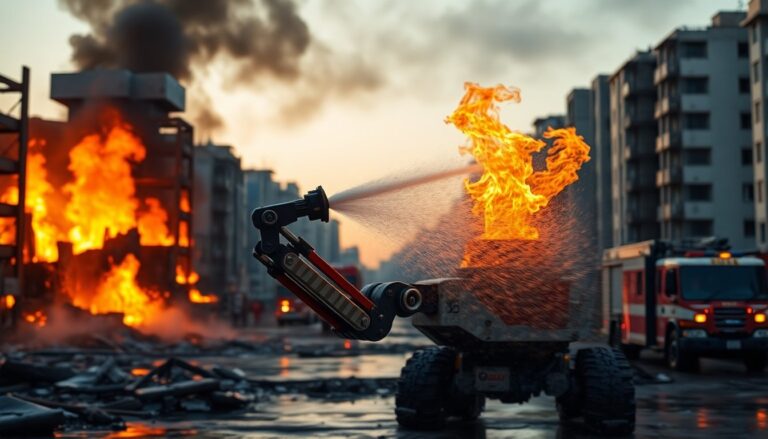Argomenti trattati
The landscape of firefighting is undergoing a transformative shift, driven by a variety of innovative technologies. As firefighters face evolving challenges, the tools at their disposal are also advancing. This article explores significant advancements that enhance operational safety and efficiency in firefighting and rescue efforts.
Robotics in firefighting
One notable development is the emergence of firefighting robots. These machines assist human firefighters by performing tasks such as extinguishing fires and conducting search and rescue operations. Their ability to navigate hazardous environments significantly reduces the risks associated with firefighting.
Types of firefighting robots
Several types of firefighting robots are currently in operation. Fire suppression robots, for instance, are equipped with powerful water cannons and can be deployed in dangerous areas where human personnel cannot safely enter. Remotely controlled, these robots enable firefighters to combat fires from a safe distance.
Additionally, search and rescue robots feature sensors and cameras that allow them to locate victims in disaster-affected areas. These robots can traverse rubble and navigate through smoke-filled environments, providing critical information to emergency responders.
Personnel accountability systems
As technology continues to evolve, implementing personnel accountability systems has become increasingly important. These systems track the location and status of firefighters during operations, ensuring that all personnel are accounted for and safe.
Software solutions for accountability
Modern software solutions play a vital role in enhancing accountability in the field. By utilizing real-time data, these systems provide incident commanders with instant updates on the location of each firefighter. This information is crucial for effective decision-making in high-pressure situations, enabling timely interventions and preventing potential accidents.
Furthermore, advancements in firefighter locating technology have facilitated the creation of comprehensive maps of operational areas, improving situational awareness. By integrating GPS tracking and other location-based services, these technologies ensure that no firefighter is left behind.
The importance of training
While technological advancements are reshaping firefighting practices, proper training remains fundamental to effective rescue operations. Firefighters must be proficient in using these new tools and understanding their functionalities.
Staying updated with training
Regular training sessions that incorporate the latest technologies are essential. Fire departments must ensure that personnel are well-versed in operating firefighting robots and using accountability software. This ongoing education not only improves response times but also enhances overall safety during emergencies.
Moreover, training should encompass the integration of innovative technologies into existing protocols. Firefighters must be prepared to blend traditional methods with modern tools, ensuring a comprehensive approach to firefighting and rescue operations.
One notable development is the emergence of firefighting robots. These machines assist human firefighters by performing tasks such as extinguishing fires and conducting search and rescue operations. Their ability to navigate hazardous environments significantly reduces the risks associated with firefighting.0

